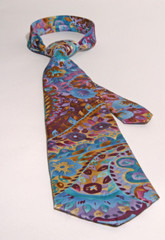5 tips for celebrating Men’s Health Week

The run-up to Father’s Day should be about more than ties, golf balls, and deciding what to grill on Sunday. Health should also be on the agenda.
Men’s Health Week was created by the U.S. Congress in 1994 to boost awareness of men’s health and ways to improve it. It’s a good time for men to contemplate their vigor, fitness, and overall health—and then do something about it.
Think you’re too old for that? It’s never too late to improve your health, no matter how old you are or what your current health status is. Here are five things you can you do to improve your health.
Get moving. Can you walk at a brisk pace for 2 miles? If so, you have a level of fitness sufficient to lower your chances of having a heart attack or dying from heart disease. If not, you can get there by putting one foot in front of the other, and going a bit further each day. Every increase in endurance translates to better health, including decreased risk of diabetes and possible protection from certain cancers. Plus you will feel better.
Get checked for colorectal cancer. If you are age 50 or older and have not been screened for colorectal cancer, you should. Of the various cancer screenings available to men, this one is the best deal because it can prevent, not just diagnose, cancer. A colonoscopy or similar procedure can find and remove precancerous colon polyps. If you have a sibling or parent who had a polyp removed before age 60, or had colon cancer at any age, it’s a good idea to start these checks sooner.
Know your blood pressure. If you don’t know your blood pressure, get it checked—and do whatever you have to do to keep it in a healthy range. High blood pressure, the proverbial “silent killer,” stalks systems throughout the body. Widespread damage occurs in the arteries, heart, kidneys, eyes, and brain. The ideal blood pressure is less than 120 over 80. Exercising more will have an immediate beneficial effect, as will cutting back on alcohol if you have more than one or two drinks a day.
Cut back on sodium in your diet. The average American man can easily take in 6 grams of sodium a day. That’s more than twice the recommended level. Most of this comes from eating fast foods, processed meats, canned and other prepared foods, and restaurant food. It’s just as important to add high potassium foods—including raisins, bananas, tomatoes, and spinach. Men who consume as much potassium as sodium have lower risks of heart disease. Start by reducing processed and pre-packaged food. Plan to cook some fresh meals during the week that include a vegetable, and save the leftovers for the next day.
Don’t ignore the warning signs. If you experience an unusual pain, ache, or other possible warning sign or symptom, don’t brush it off—as men are prone to do—as “probably nothing.” Blood in the urine or stool may be harmless, but it isn’t “normal.” It needs to be evaluated by a medical professional. Heart disease remains the leading killer of men and all Americans. Don’t ignore the signs:
- Excessive sweating, shortness of breath, or exhaustion with exertion could be a treatable heart or lung problem.
- Many men believe that the pain of a heart attack is felt only on the left side of the chest and moves to the left arm. It isn’t always that cut-and-dried. Heart-attack pain is often felt under the breastbone (sternum) and pain occurs in both arms as often as in the left arm alone.
- Chest pain that is triggered by activity but that goes away with rest suggests angina (a narrowing of one or more coronary arteries) while oppressive pain that isn’t relieved by rest suggests a heart attack.
This week, give yourself the gift of good health. And keep it going beyond Father’s Day.
About the Author
William Kormos, M.D., Editor in Chief, Harvard Men's Health Watch
Disclaimer:
As a service to our readers, Harvard Health Publishing provides access to our library of archived content. Please note the date of last review or update on all articles.
No content on this site, regardless of date, should ever be used as a substitute for direct medical advice from your doctor or other qualified clinician.













